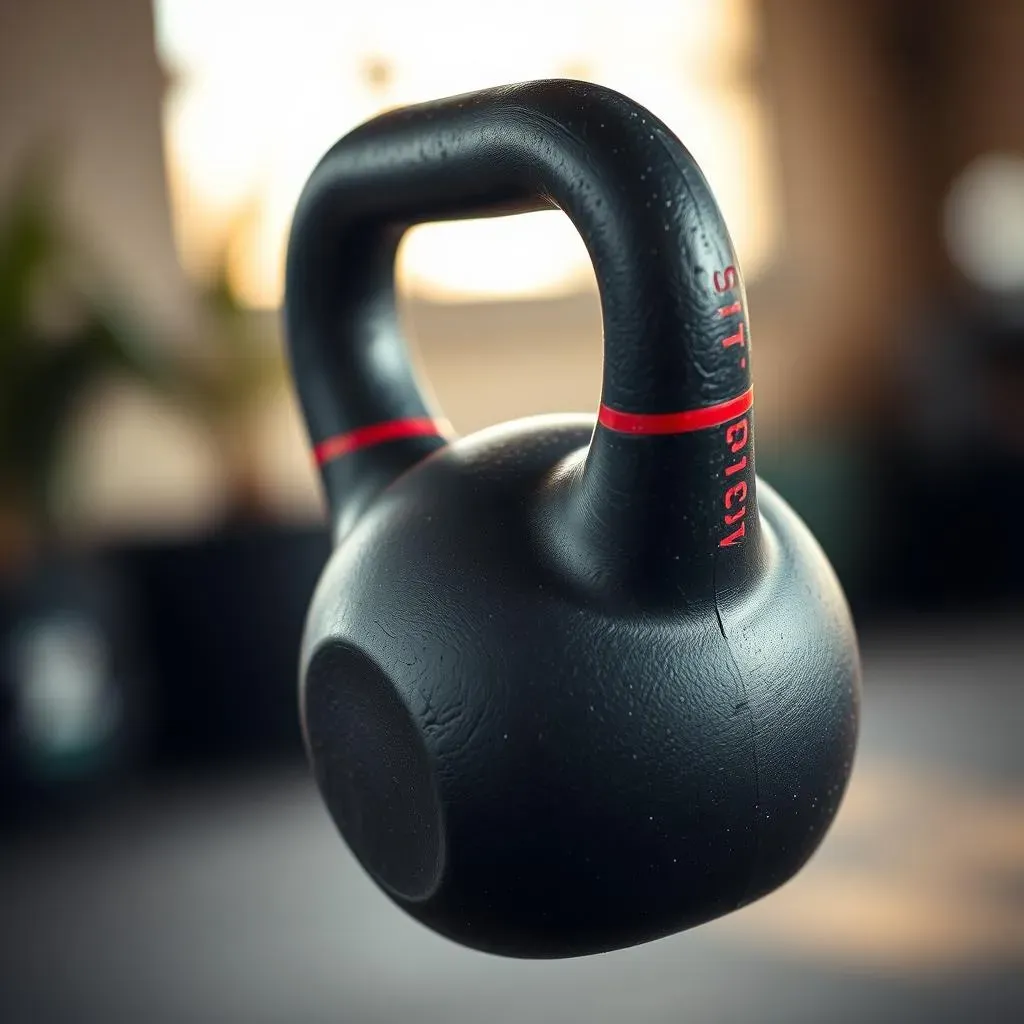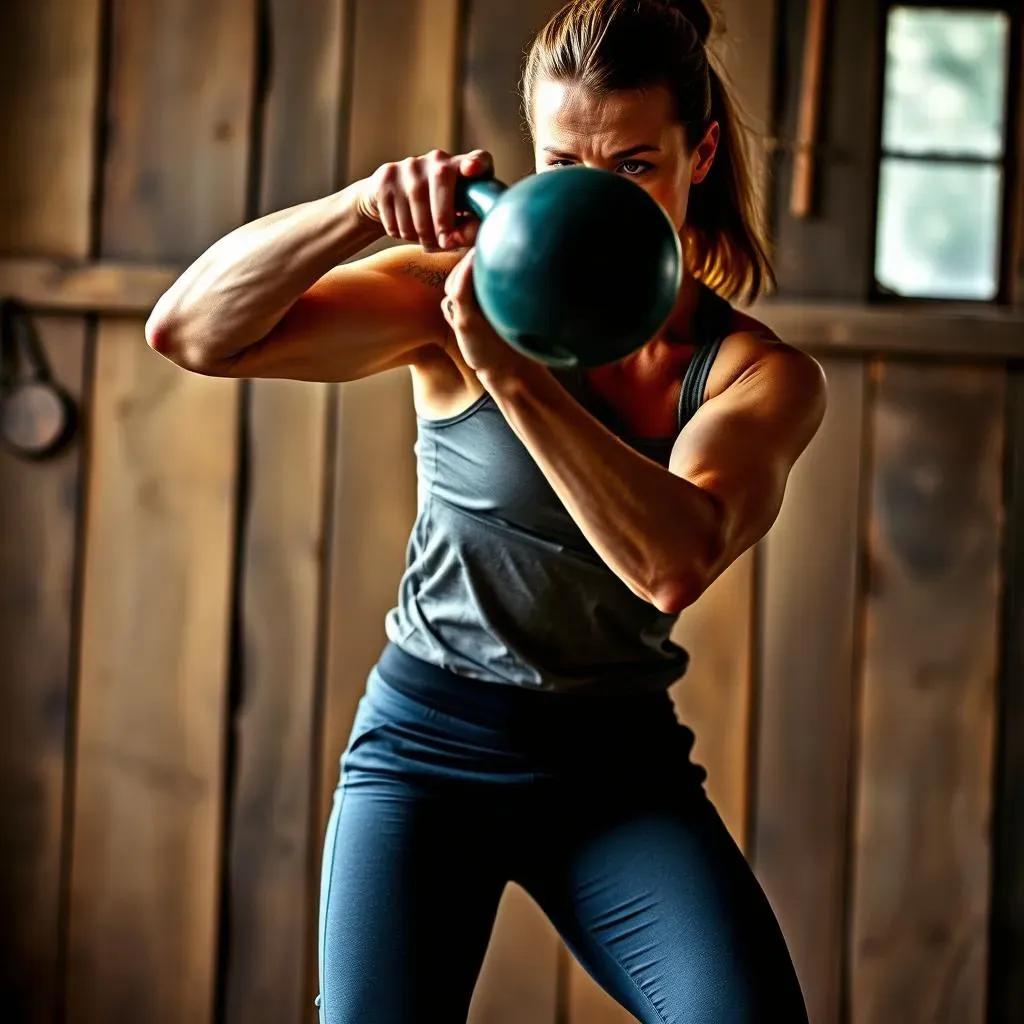Table of Contents
Tired of endless crunches that barely make a dent? I was too! That's when I discovered the magic of the core kettlebell workout. Forget those isolated ab exercises; we’re talking full-body movements that secretly sculpt your core while building serious strength. This isn't just about getting a six-pack, it's about creating a powerhouse core that improves everything from your posture to your power. In this article, we'll explore why kettlebells are so effective for core training. I'll show you my favorite kettlebell moves that target all those core muscles you didn't even know you had. Then, I'll guide you through building your own killer core kettlebell workout. So, if you're ready to ditch the boring sit-ups and unleash your inner beast, then let’s get started on this journey to a stronger, more stable you.
Why Kettlebells Are Secret Core Superheroes

Why Kettlebells Are Secret Core Superheroes
The Core Connection
so you might be thinking, "Kettlebells? Aren't those for, like, swinging around?" And yeah, they are great for that, but here's the thing: every time you swing, lift, or even just hold a kettlebell correctly, your core is working overtime. It’s not just about those six-pack muscles; it's about the deep, stabilizing muscles that protect your spine and give you real-world strength. Think of your core as the central hub for all your movements; if it's weak, everything else suffers. Kettlebells force your core to engage to keep you stable and balanced, unlike machines that often isolate muscles.
I remember when I first started using kettlebells, I was shocked at how much my abs ached the next day, even though I hadn't done a single crunch. It was the kind of deep, satisfying ache that told me something was really working. That's the beauty of kettlebell training, it sneakily works your core without you even realizing it.
More Than Just Abs
The beauty of kettlebells is how they make your whole body work as a team. Unlike traditional weight training where you might isolate a bicep or a quad, kettlebell exercises are compound movements, which means they engage multiple muscle groups at once. This leads to a much more functional strength that translates into everyday activities. When you do a kettlebell swing, for example, you're not just working your hamstrings and glutes; your core is firing to keep your back from collapsing, your shoulders are engaged to control the bell, and your entire body is working in harmony.
And let's be real, who has time for endless hours in the gym? Kettlebells are awesome because they give you a full-body workout in a fraction of the time. You get cardio, strength, and core work all rolled into one efficient package. It is like a secret weapon for building all over strength.
Kettlebell Benefit | Why It's Awesome |
|---|---|
Full-Body Engagement | Works multiple muscle groups at once. |
Functional Strength | Improves real-world movements. |
Efficient Workouts | Saves time with compound exercises. |
Core Activation | Strengthens deep stabilizing muscles. |
Top Kettlebell Moves for a RockSolid Core

Top Kettlebell Moves for a RockSolid Core
The Core-Engaging Essentials
Alright, so now that you're convinced kettlebells are core superheroes, let's get into the nitty-gritty: the moves. We're not talking about endless sit-ups here, we’re talking about functional movements that will not only make your core stronger, but will also improve your coordination, balance, and overall athleticism. First up, we have the kettlebell swing. This isn’t just about moving the weight, it’s about a powerful hip hinge and a core braced for action. The swing works your entire posterior chain, including your glutes, hamstrings, and lower back, while your core is working overtime to stabilize you. Another one of my favorites is the goblet squat. Holding the kettlebell close to your chest forces your core to engage to keep you upright, making it a great move for building stability.
Then there are the carries. Sounds too simple, right? But trust me, walking with a kettlebell in one hand, like in a suitcase carry, is a sneaky way to challenge your obliques and improve your posture. Don't forget the Turkish get-up, the king of all kettlebell exercises. It's a full-body ballet that forces your core to engage in every phase of the movement. It might seem intimidating, but it's worth the effort.
Beyond the Basics
Once you've got those essentials down, it's time to explore some more advanced moves. The kettlebell windmill is a game changer for core strength, hip mobility, and shoulder stability. It's a challenging movement, but it really helps you understand how to engage your core while moving through different planes of motion. Then there's the single-arm press, this move not only build shoulder strength but also forces your core to work extra hard to prevent rotation, making it a fantastic core exercise as well.
And if you're feeling adventurous, try the kettlebell renegade row. It's a plank variation that will not only challenge your core stability but will also work your back and arms. It's a great way to get a full-body workout while focusing on core strength. Remember, it’s not about the weight you use, but how well you execute each exercise. Start with a lighter bell and focus on proper form. Once you’ve mastered the technique, you can gradually increase the weight.
Kettlebell Move | Core Benefit |
|---|---|
Kettlebell Swing | Full core engagement, hip power |
Goblet Squat | Core stability, upright posture |
Suitcase Carry | Oblique strength, posture |
Turkish Get-Up | Full-body core engagement, coordination |
Kettlebell Windmill | Core strength, hip mobility |
Single-Arm Press | Anti-rotation core, shoulder strength |
Renegade Row | Plank core, back and arm strength |
Crafting Your Killer Core Kettlebell Workout

Crafting Your Killer Core Kettlebell Workout
Building Your Foundation
so you’ve got the moves down, but how do you put them all together? First, let's talk about the structure of your core kettlebell workout. We're not aiming for marathon sessions here; think quality over quantity. A solid workout should include a warm-up, the main exercises, and a cool-down. Start with 5-10 minutes of light cardio, like jogging in place, and dynamic stretches, like leg swings and torso twists. This will get your muscles warm and ready for action. For the main event, pick 3-4 exercises that target different aspects of your core. Don't just focus on the front abs; make sure you're also hitting those obliques and lower back muscles.
I like to start with something like the kettlebell swing to get my heart rate up, then move onto a more stability-focused exercise like the goblet squat, followed by a carry variation or a Turkish get-up for a full body challenge. Then, I might finish with something like the windmill or renegade row to work different core muscles. The key is to choose exercises that you enjoy and that challenge you.
Sets, Reps, and Progression
Now, let's talk about sets and reps. If you're just starting out, aim for 3 sets of 8-12 reps for each exercise. Focus on maintaining proper form rather than using heavy weights. As you get stronger, you can increase the reps, the sets, or the weight. Remember, you're not competing with anyone but yourself. It's all about continuous progress. You should also pay attention to rest. Don't rush from one exercise to the next. Give your body enough time to recover, usually 60-90 seconds between sets. If you're doing a circuit, meaning you're doing all the exercises back-to-back with minimal rest, then you might need a slightly longer rest period between rounds.
Listen to your body, if you feel pain, stop and adjust. There's no shame in modifying an exercise or using a lighter kettlebell. It's better to be consistent than to push yourself too hard and get injured. And don't forget to cool down after your workout. A few minutes of static stretches, holding each for 30 seconds, will help improve flexibility and reduce muscle soreness.
Workout Element | Recommendation |
|---|---|
Warm-up | 5-10 minutes of light cardio and dynamic stretches |
Main Exercises | 3-4 exercises targeting different core muscles |
Sets and Reps | 3 sets of 8-12 reps (adjust as needed) |
Rest | 60-90 seconds between sets |
Cool-down | 5-10 minutes of static stretches |
Staying Consistent and Having Fun
The most important thing is to be consistent with your workouts. Aim for 2-3 core kettlebell workouts per week, and try to make them a part of your routine. It's way better to do a short, effective workout regularly than to do a long, grueling workout once in a blue moon. Don't be afraid to experiment with different exercises and variations, it keeps things interesting and keeps your body challenged. Find a workout buddy, join a kettlebell class, or listen to some great music while you workout, it all helps to keep you motivated.
And please remember that progress takes time, so don't get discouraged if you don't see results right away. Just keep showing up, keep putting in the effort, and you'll eventually get there. I started with a 10lb kettlebell, and now I'm swinging around a 24kg one. It's all about small steps and consistency. So, go ahead, grab that kettlebell, and let's build that core you've always dreamed of.
Wrapping Up Your Core Kettlebell Journey
So, there you have it, a complete guide to building a rock-solid core with kettlebells. We've seen why they're secretly amazing for core work, explored some killer moves, and even crafted a workout plan. Remember, consistency is key. Don't expect a six-pack overnight, but do expect to feel stronger, more stable, and more powerful with each session. The core kettlebell workout isn't just about aesthetics; it's about building a foundation of strength that supports everything you do. Now go grab that kettlebell, get to work, and let me know how it goes. You've got this!